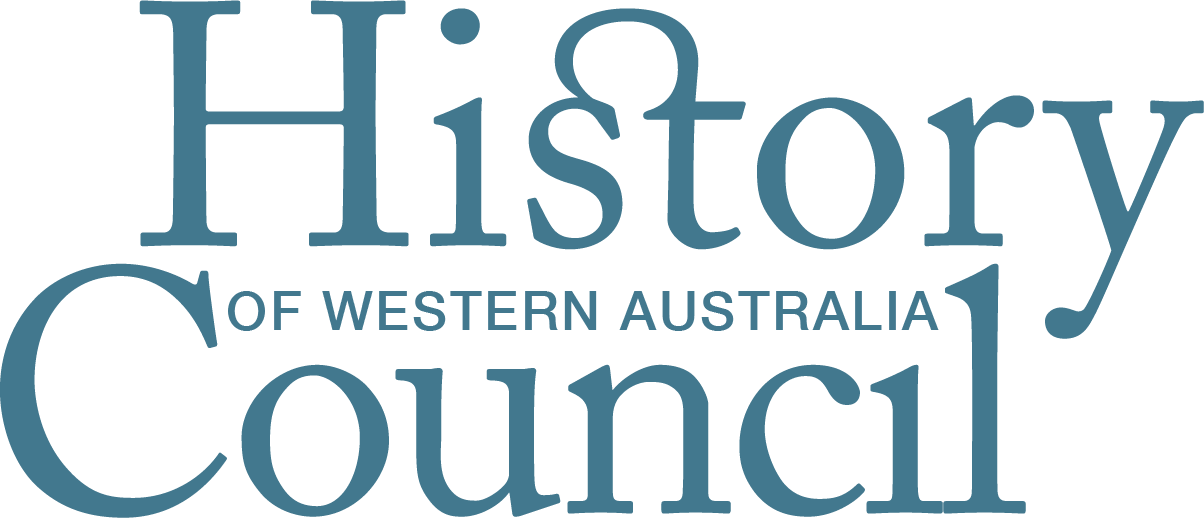School’s history marked in the footpath
The Governors, staff and school on opening day 14th September 1921 showing the original facade of the 1899 Parish Hall [courtesy St Mary’s School Archives]
As part of St Mary’s Anglican Girls’ School centenary year commemorations, the school is organising a plaque to be installed in the footpath in Colin Street, West Perth, to mark the original location of its first school campus.
Although a small token, the plaque will provide at least some reminder to passers-by of the school’s historical presence in this busy commercial district which for more than 70 years buzzed with the daily comings and goings of parishioners, school children, teachers and parents.
The Parish of St Mary’s was established in West Perth in 1897 with the first Parish Hall built in Colin Street in 1899, a Rectory in 1901 and St Mary’s Church in 1906. The buildings were designed by well-known architects John Talbot Hobbs and Percy William Harrison. Although the hall was being used for classes for local school-aged children since it had opened, by 1905 the more formal establishment of a girls’ church school for St Mary’s West Perth parish was being considered. However, the new church had stretched the parish funds and combined with the onset of the First World War, the plans for a school had to be deferred. Finally, on 14th September 1921, St Mary’s Church of England Girls’ School opened in the Parish Hall with 98 pupils. Since its establishment, the parish and school had been supported by some of Perth’s more prominent families such as Forrest, Hassell, Kelsall, Leeder, Mosey, Sholl, Strickland, Hackett, Boan and Cowan.
During the 19th century many schools, like St Mary’s, were established in Perth city before the urban spread in the middle of the 20th century drew families further out into the suburban areas. Along with St Mary’s, other early schools established in and around the city included Bishop Hale’s School (Cloisters), Mercedes, Trinity-Aquinas and St Brigid’s, as well as the first government primary and high schools such as Perth Boys School (later Hale School) and Perth Modern School. Before the growth of private motorcar ownership and development of good roads, having schools in the city meant they were close to home and local parish churches, were in walking distance or with easy access to transport if needed. They also made use of existing public open spaces and parklands as well as the early sporting facilities and grounds in the city including at the Esplanade, Kings Park and the Swan River.
St Mary’s, which had evolved from the amalgamation of other small schools already established in the West Perth area, provided education for girls from Kindergarten to Leaving or Matriculation level, and boys from Kindergarten to aged eight (Year 3). There were day students as well as provision for boarders through the adaption of existing houses all around West Perth. Although a Church of England Parish school, children of many religious denominations were welcomed at the school, with school’s first principal Reverend Charles Lawrence Riley and the Board adopting a very open enrolment policy.
By the mid-20th century, as Perth city grew and became more a focus of business and commercial activity, many of these schools were relocated out to new campuses in the suburbs. After 50 years in West Perth, St Mary’s moved out of West Perth (as had its brother school Hale a decade earlier) and relocated to its new Karrinyup campus in 1970/71. Given the real estate and development value of the land in West Perth, the school and church were earmarked for demolition. Former students, parents, staff, local parishioners and other interested parties formed the Friends of St Mary’s and lobbied the Vestry and also raised a petition that was presented to the City of Perth. However, their efforts were without success and the Vestry continued with the demolition plans. The last service took place in the 1906 St Mary’s Church on 16 March 1980. As some concession a new Chapel of St Mary Anglican Church was built to replace the old church and included some of the some of the original elements such as the stained-glass windows.

